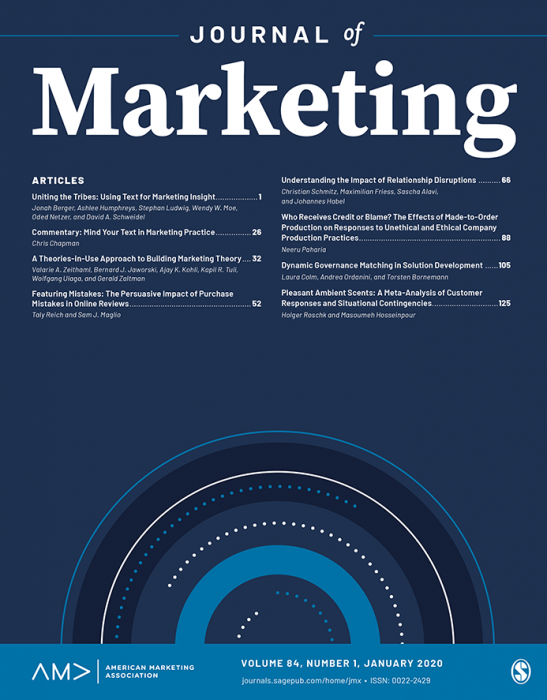EXPRESS:多单位报价和费率计算:费率如何影响价格和促销敏感性
IF 10.4
1区 管理学
Q1 BUSINESS
引用次数: 0
摘要
消费者经常在市场上面临多种单位报价(例如,5磅咖啡40美元),必须弄清楚如何评估它们。虽然总价格(例如,40美元)总是提供,但相关的价格信息却没有(例如,咖啡8美元/磅)。这项研究的重点是了解这些利率在影响消费者决策方面所起的作用。作者发现,无论价格是由管理者提供的还是由消费者计算的,消费者对每单位美元(相对于每单位美元)的促销价格更敏感,因为每单位美元的价格增加了价格的显著性。此外,如果没有提供费率信息,作者将记录消费者如何计算这些费率。作者发现,消费者倾向于使用较大的数值元素作为他们的价格分子,这导致当多单位报价的数量大于价格时计算单位美元率,而当价格大于数量时计算单位美元率。作者讨论了理论、实践和政策含义。本文章由计算机程序翻译,如有差异,请以英文原文为准。
EXPRESS: Multiple Unit Offers and Rate Calculations: How Rates Influence Price and Promotion Sensitivity
Consumers are often faced with multiple unit offers (e.g., $40 for 5 lbs of coffee) in the marketplace and must figure out how to evaluate them. While the total price (e.g., $40) is always provided, the associated rate information is not (e.g., $8/lb for coffee). The focus of this research is on understanding the role that these rates play in influencing consumer decision-making. The authors find that regardless of whether rates are provided by managers or calculated by consumers, consumers are more sensitive to promotional offers with dollar per unit (vs. unit per dollar) rates because dollar per unit rates increase price salience. Additionally, when rate information is not provided, the authors document how these rates are computed by consumers. The authors find that consumers prefer to use the larger numerosity element as their rate’s numerator, which leads to calculating units per dollar rates when the multiple unit offer’s quantity is larger in numerosity than the price but dollars per unit rates when price is larger in numerosity than the quantity. The authors discuss theoretical, practical, and policy implications.
求助全文
通过发布文献求助,成功后即可免费获取论文全文。
去求助
来源期刊

Journal of Marketing
BUSINESS-
CiteScore
24.10
自引率
5.40%
发文量
49
期刊介绍:
Founded in 1936,the Journal of Marketing (JM) serves as a premier outlet for substantive research in marketing. JM is dedicated to developing and disseminating knowledge about real-world marketing questions, catering to scholars, educators, managers, policy makers, consumers, and other global societal stakeholders. Over the years,JM has played a crucial role in shaping the content and boundaries of the marketing discipline.
 求助内容:
求助内容: 应助结果提醒方式:
应助结果提醒方式:


